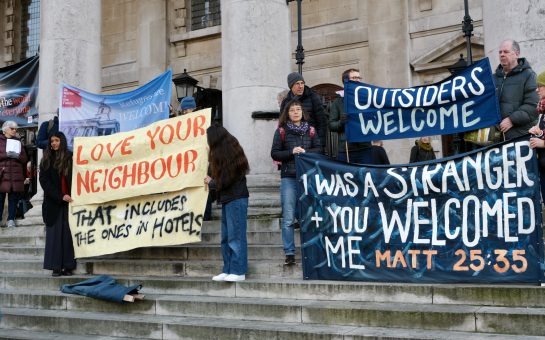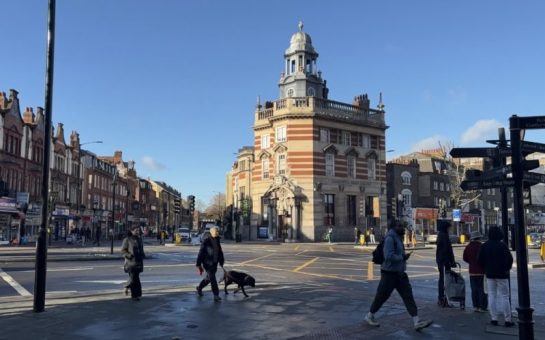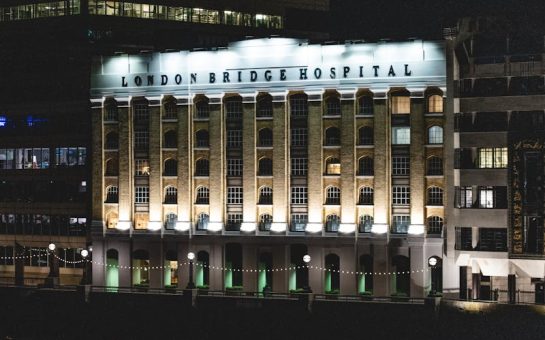King’s College London and Citizens UK have unveiled plans to tackle major health concerns in Southwark’s most disadvantaged neighbourhoods in a first-of-its-kind project for the UK.
The ‘Southwark Equity Neighbourhood’, a long-term project aiming to target health inequality between the borough’s most and least deprived areas, has been announced by King’s College and Citizens UK – an organisation which specialises in community campaigning against injustice.
Southwark experiences some of the most severe levels of inequality in the capital and is in the top five most deprived London boroughs, with life expectancy varying by as much as eight years depending on the area in which someone lives.
Professor Craig Morgan, who is leading King’s College research for the project, said: “When you think about a difference in eight years, and [Southwark] doesn’t cover a huge geographical area, that’s really shocking and demands a response.
“It’s something that we should all be concerned about and working towards addressing.
“In London, almost unlike any other city, […] poverty lives side by side with wealth, almost from one street to the next, even looking across the street from one row of houses to another.”
While a man in the neighbourhood of Faraday is expected to live to nearly 79 years old, a man in Dulwich Village – just two miles away – is expected to live to over 87.
And it is not just older people who are affected: almost half of school students aged 10 or 11 who live in Faraday are overweight or obese, while that number is only 17% in Dulwich Village.
In certain parts of Southwark, such as Bermondsey, crossing a road can take you from a neighbourhood that is among the top 10% least deprived areas in the UK to one that is in the 25% most deprived, according to government statistics published in October.
The project takes inspiration from a similar scheme in Chicago, which has significantly reduced infant mortality rates within three years by helping communities to tackle the area’s most pressing health problems.
Vitoria Russo Gaino, Citizens UK’s South London organiser, said: “We work with a lot of parents […] who live in accommodation that is in disrepair and has mould, and we hear how that impacts not only the mental wellbeing of their family being in these cramped flats, but also how it affects their physical health.
“It can be a big range of things from how issues such as housing directly impact people’s health to barriers to them accessing healthcare.”
In the first year of the project, researchers will work closely with local people to identify the biggest reasons behind poor health within Southwark’s most deprived communities.
Gaino said: “The scheme is using community organising methods to bring together communities and do this deep listening, really thinking about health and change in a very long-term way.
“The overarching aspiration is around how decisions are made and who’s at the table, creating a very unique partnership where you have communities standing alongside councils and local authorities making those decisions.”
Working alongside local businesses, authorities, and the NHS, this research will be used to create tailored solutions to the problems which are negatively affecting people’s long-term health.
This might include schemes to fix issues in housing or transport, helping people gain access to mental health treatment, or even getting a large local employer to pay better wages to its staff.
Gaino said: “When thinking about funding and outcomes, a lot of focus is on things like bad occupation of A&E or discharges and so on.
“This is important, but it feels like a plaster when the wounds are a lot deeper.”
This focus on prevention may also help to ease pressure on local services which struggle to meet people’s needs in the most deprived areas due to limited funding, says Prof. Morgan.
The researchers are hoping that the Equity Neighbourhood will set a precedent for other schemes to be introduced across areas in the UK which have large levels of inequality.
Prof. Morgan said: “This research creates a model for other areas of high need to do something similar.
“All of these elements can be transported and implemented anywhere.”
While the success of projects like the Southwark Equity Neighbourhood does require resources and long-term involvement from local groups and authorities, Professor Morgan is hopeful that similar schemes can become an important part of local healthcare in the future.
He said: “Local initiatives are not quite so dependent on a dramatic shift in government policy.
“When the national narrative is very much that ‘we have no money’, [..] focussing on local areas, on what you can do, on what people collectively can do, is empowering.”
Gaino says that the announcement has received a positive response from groups in Southwark working with Citizens UK, who are excited about the opportunities that the project brings to the community.
It has also received support from senior members of the NHS and Southwark Council, who celebrated the launch of the project at the South London Citizens Assembly to almost 1000 people at St George’s Cathedral in Southwark.
Featured image credit: Jim Barton and licensed for reuse under a cc-by-sa/2.0 Creative Commons Licence.




Join the discussion